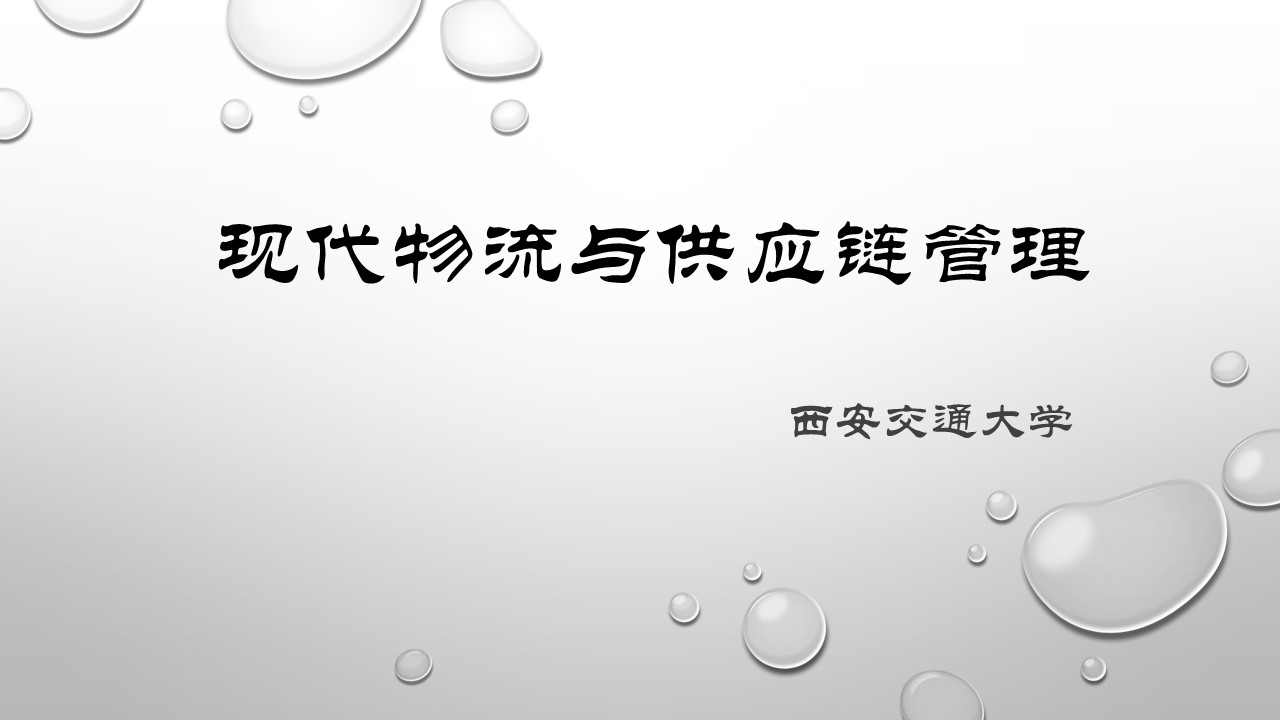
当前课程知识点:Diagnostics in Chinese Medicine > Week 8 Diagnosis methods: Observation (2) > 6.2.2 Observation of five sensory organs > 6.2.2.2Observation of five sensory organs(observation of lips,teeth and gums,throat)
返回《Diagnostics in Chinese Medicine》慕课在线视频课程列表
返回《Diagnostics in Chinese Medicine》慕课在线视频列表
同学们好
我们继续学习望五官之望口唇
望齿龈以及望咽喉
首先我们来看望五官之望口与唇
口为饮食通道 脏腑要冲
脾开窍于口 其华在唇
手足阳明经环绕口唇
故 口与唇与脾 胃关系密切
所以 望口与唇 可以诊察脾与胃的病变
望口唇
主要望口唇的色泽 形态和动态
首先 我们来学习口唇的色泽
正常的唇色是红润 有光泽
而且唇色要比面色稍微红润一些
这表明胃气充足 气血调匀
唇色青 赤 白 黑的变化
与面色变化的意义是一致的
比如
唇色淡白 见于血虚或者失血的病人
唇色深红 见于热盛
唇红肿而干 见于热极
口唇樱桃红色
见于一氧化碳煤气中毒的病人
口唇青紫 见于血瘀的病人
口唇青黑
见于寒极 痛极 血脉瘀阻的病人
第二是口唇的形态变化
口角流涎
小孩见于脾虚湿盛
而成年人多见于中风病人
口唇干裂 多见于津伤
这是因为燥热伤津
或者阴液亏损 不能荣养所表现出来的一种病证
口唇糜烂 通常见于脾胃积热
唇内溃疡 其色淡红
这是虚火上炎的一种表现
唇周生疮 这是心脾积热的一种表现
而如果小儿口腔 舌上出现片状的白屑
称为鹅口疮
中医认为
鹅口疮是由于湿热秽浊之气上蒸
所导致的一种病证
第三是口唇的动态
正常的口唇是可以随意开合 动作协调
《望诊遵经》将口唇的异常动态
归纳为口形六态
其中
口张 是指口张而不闭
属于虚证
通常见于肺气将绝 病危的病人
口噤 是指口闭而难开 牙关紧急
属实证
多因筋脉拘急所导致的
可见于中风 痫病 惊风 破伤风
及马钱子中毒等
口撮 是指上下口唇紧聚
为邪正交争所致
可见于新生儿脐风
或者是破伤风的病人
口歪 是指口角向一侧歪斜
可见于风邪中络之口僻证
也可以见于风痰阻络的中风病病人
口振 是指战栗鼓颌 口唇振摇
多为阳衰寒胜或邪正剧争所致
可见于外感寒邪 温病 伤寒欲作汗
或者是疟疾发作的病人
口动 是指口频繁开合 不能自禁
为胃气虚弱的表现
若口角掣动不止
则为热极生风 或脾虚生风之象
以上是望口唇的色泽 形态和动态内容
下面我们学习望齿与齿龈
齿为骨之余 骨为肾所主
牙龈护于齿 为足阳明胃经分布之处
齿与齿龈与肾 胃关系密切
故望齿和齿龈可诊察肾和胃的病变
以及津液盈亏
望齿和齿龈 主要是望齿和齿龈的形态和色泽
首先我们来看看牙齿
正常的牙齿应该为
洁白 坚固而润泽
表明肾气充足 津液未伤
如果牙齿干燥 表明了胃阴已伤
牙齿光燥如石 为阳明热甚
津液大伤的表现
牙齿燥如枯骨 为肾精亏损
精不上荣的表现
通常见于病情晚期 病情比较重
如果牙齿松动 齿龈外露
则是属于肾虚 或者虚火上炎的病人
也可以见于胃肠有热的病人
如果牙关紧急
通常见于风痰阻络
或者热极动风的病人
如果除了牙关紧急的咬牙之外
还有齘齿 这里齘齿是指磨牙
通常见于热盛动风的病人
生活中 我们也可以见到
有些人睡觉中磨牙 称为睡中齘齿
通常见于胃热 或者是虫积的病人
下面我们来看下 牙龈
正常的牙龈 要比我们的唇色要稍微浅淡
所以正常的齿龈 颜色是淡红而润泽
是胃气充足 气血调匀的表现
如果齿龈淡白 通常见于血虚 失血
齿龈红肿疼痛 通常见于胃火亢盛
如果齿龈色淡 龈肉萎缩
这属于肾虚 胃阴不足的一种表现
如果齿缝出血 称为齿衄
如果齿衄兼红肿痛 是属于实证
是胃火上炎的表现
如果齿缝出血 但是不红不痛 微肿
这是虚证
与脾虚或者是阴虚火旺有关
所以牙齿出血 有实有虚
实证通常在胃火
虚证通常在脾虚 或阴虚火旺
以上是望齿和齿龈的形态和色泽的内容
最后一个部分是望咽喉
咽通于胃腑 是饮食之道 为胃所系
喉连于气道 为气息之门 归肺所属
足少阴肾经循喉咙 夹舌本
亦与咽喉关系密切
因此 望咽喉可诊察肺 胃 和肾的病变
一般来讲 咽喉的实证在肺胃 虚证在肾
望咽喉 主要望咽喉的色泽和形态的变化
正常的咽喉色泽淡红而润泽
不肿不痛 呼吸通畅 发音正确
食物下咽顺利
如果出现异常 我们主要从两个方面来看
第一个是红肿
咽部深红 肿痛明显
多见于肺经风热 或者肺胃热盛的实热证
如果咽喉发红 但是红色娇嫩 而肿痛不明显
是肾阴亏虚 虚火上炎的阴虚火旺证
第二个是乳蛾
乳蛾是指喉核肿胀充血 形似蚕蛾 故名乳蛾
乳蛾表面有黄白色的脓点
逐渐连成伪膜
易擦去 不易出血
称为烂乳蛾
无论是烂乳蛾还是乳蛾
都见于肺经风热 或者肺胃热盛的实热证
以上是望咽喉的色泽和形态的内容
最后针对五官诊断意义总结如下
望目 主要诊察心肝肾的病变
以及全身脏腑精气的盛衰
望耳 主要诊察肾 胆和全身的病变
一般来讲 实证在肝胆 而虚证在肾
望鼻 主要诊察肺和脾胃的病变
可以判断脏腑的虚实 胃气的盛衰
病情的轻重和预后
望口唇 主要诊察脾和胃的病变
望齿和齿龈
主要诊察肾和胃的病变以及津液的盈亏
望咽喉主要诊察肺胃和肾的病变
一般来讲 实证在肺和胃 虚证在肾
同学们
以上是望五官的全部内容
本节课就讲到这里
-Introductory remark
--QQ groups、WeChat public account
-Introduction
--【Discussion 1】Why do you want to take this course?
-Unit test for Introduction
-1.1 Yin-yang theory
-1.2 The theory of five elements
--1.2.1 The theory of five elements
--1.2.2 Application of the theory of five elements
-Frequently Asked Questions
-Unit test for week 1
-2.0 Outline
--【Discussion 2】How to understand the holistic view centered on the Zang Fu theory?
-2.1 Liver
--【Discussion 3】Why is repose more important than vigorous exercise in recuperation for patients with
-2.2 Heart
-2.3 Spleen
-2.4 Lung
--2.4 Lung
-2.5 Kidney
-2.6 Six fu organs
-Frequently Asked Questions
-Unit test for week 2
-3.1 Qi
--3.1 Qi
-3.2 Blood
-3.3 Body fluid
-3.4 The relationship of qi, blood and body fluid
--3.4 The relationship of qi, blood and body fluid
--【Discussion 4】A discussion about the theory of qi, blood and body fluid
-Frequently Asked Questions
-Unit test for week 3
-4.0 Outline
-4.1 Six exogenous factors
--4.1.2 Nature and pathogenicity of wind and cold
--4.1.3 Nature and pathogenicity of summer heat and damp
--4.1.4 Nature and pathogenicity of dryness and fire
-4.2 Etiology of visceral impairment
--4.2 Etiology of visceral impairment
-Frequently Asked Questions
-Unit test for week 4
-5.0 Outline of inquiry
--【Discussion 5】If you were a patient, how would you describe your condition to your doctor first?
-5.1 Inquiry of Chills and fever
--5.1.1 Chills and fever(Aversion to cold with fever)
--5.1.2 Chills and fever(Chills without fever)
--5.1.3 Chills and fever(Fever without chills)
--5.1.4 Chills and fever(Alternative chills and fever)
--【Discussion 6】How to understand "if you have clinical manifestations of cold, that is exterior syndr
-5.2 Inquiry of perspiration
-Frequently Asked Questions
-Unit test for week 5
-5.3 Inquiring of pain
--【Discussion 7】How to understand "stagnation leading to pain and innourish leading to pain"?
-5.4 Inquiring of head, body, thorax and abdomen
--5.4 Inquiring of head, body, thorax and abdomen
-5.5 Inquiring of ears and eyes
--5.5 Inquiring of ears and eyes
-5.6 Inquiring of sleep
-5.7 Inquiring of food and drink, appetite and taste
--5.7 Inquiring of food and drink, appetite and taste
-5.8 Inquiring of defecation and urination
--5.8.1 Inquiring of defecation
--5.8.2 Inquiring of urination
-5.9 Inquiring of infantile and women's disease
--5.9 Inquiring of infantile and women's disease
-Unit test for week 6
-6.0 Outline of Observation
--【Discussion 8】Please use the whole body inspection (including the expression, complexion and figure)
-6.1.1 Observation of vitality
--6.1.1 Observation of vitality
-6.1.2 Observation of the color
--6.1.2.1 The content, principles of inspection of the color
--6.1.2.2 Indication of diseases by five colors
--【Discussion 9】How do you understand the normal complexion of a normal people?
-6.1.3 Observation of the appearance
--6.1.3 Observation of the appearance
-6.1.4 Observation of figure and posture
--6.1.4 Observation of figure and posture
-Unit test for week 7
-6.2.1 Observation of head and face
--6.2.1 Observation of head and face
-6.2.2 Observation of five sensory organs
--6.2.2.1Observation of five sensory organs(observation of eyes,ears,nose)
--6.2.2.2Observation of five sensory organs(observation of lips,teeth and gums,throat)
-6.2.3 Observation of body
-6.2.4 Observation of limbs
-6.2.5 Observation of two lower orifices
--6.2.5 Observation of two lower orifices
-6.2.6 Observation of skin
-6.3 Observation of excreta
-6.4 Observation of infantile fingerprints
--6.4 Observation of infantile fingerprints
-Frequently Asked Questions
-Unit test for week 8
-7.1 Outline of tongue inspection
--7.1.1 The morphology and structure of the tongue
--7.1.2 The principle of tongue examination
--7.1.3 The method and precaution of tongue examination
--7.1.4 The content of tongue examination, normal tongue
-7.2 Inspection of tongue structure
--7.2.1 Observe the color of tongue
--7.2.2 Observe the shape of tongue
--7.2.3 Observe the states of tongue
--7.2.4 Observation of sublingual vein
-7.3 Observation of tongue coating
--7.3.1 Observation of coating texture
--7.3.2 Observe the color of coating
-7.4 Clinical significance of tongue diagnosis
--7.4 Clinical significance of tongue diagnosis
--【Discussion 10】Why to observe the tongue can be used to diagnose disease?
-Unit test for week 9
-8.1 The principle of pulse examination
--8.1 The principle of pulse examination
-8.2 The regions and methods of pulse examination
--8.2 The regions and methods of pulse examination
-8.3 The elements of pulse examination and the normal pulse
--8.3 The elements of pulse examination and the normal pulse
-8.4 Characteristics and significance of pulse
--8.4.1 Superficial pulse, deep pulse, slow pulse, rapid pulse
--8.4.2 Surging pulse, thin pulse, long pulse, short pulse
--8.4.3 Feeble pulse, forceful pulse, slippery pulse, uneven
--8.4.4 Taut pulse, tense pulse,soggy pulse, moderate pulse
--8.4.5 Knotted, slow-regular-intermittent, irregularly abrupt
-8.5 Similar pulse, concurrent pulse, pulse indicating deterioration of visceral qi۞
--8.5 Similar pulse, concurrent pulse, pulse indicating deterioration of visceral qi۞
--【Discussion 11】Why is complex pulse more common than single-factor pulse?
-8.6 Women’s pulse, children’s pulse
--8.6 Women’s pulse, children’s pulse
-8.7 The clinical significance of pulse diagnosis
--8.7 The clinical significance of pulse diagnosis
-Unit test for week 10
-9.1 Listening
-9.2.1 Abnormal sound
-9.2.2 Abnormal language
-9.2.3 Respiratory abnormality
--9.2.3 Respiratory abnormality
-9.2.4 Cough
--【Discussion 12】How to observe the patient's cough sound and sputum changes to determine whether the
-9.2.5 Abnormal sounds of the stomach and intestines
--9.2.5 Abnormal sounds of the stomach and intestines
-9.3 Smelling
--【Discussion 13】How to diagnose by smelling?
-Unit test for week 11
-10.1 The method, meaning and precautions of palpation
--10.1 The method, meaning and precautions of palpation
-10.2 Contents of palpation
--10.2.1 Palpating chest and hypochondrium
--10.2.2 Palpating stomach and abdomen
--10.2.4 Palpating hands and feet, palpating acupoints
--【Discussion 14】How to determine whether external or internal injuries?
-Unit test for week 12
-Conclusion
-Final Exam
--Final Exam


